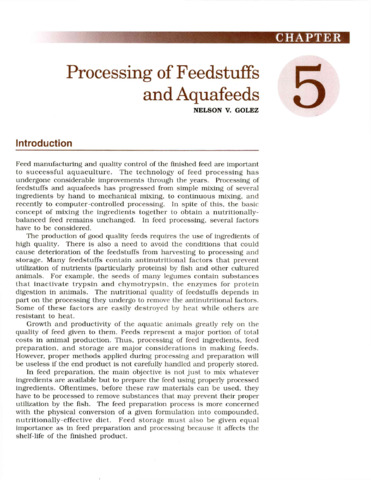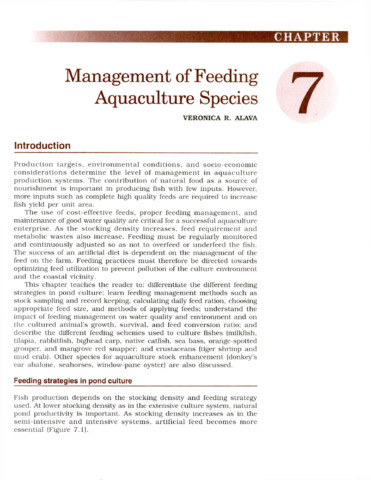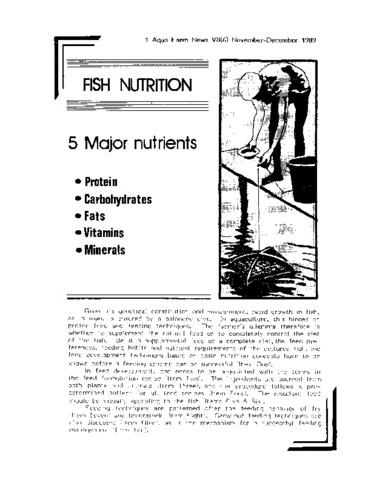Diet development and evaluation for juvenile abalone, Haliotis asinina: animal and plant protein sources
- Global styles
- MLA
- Vancouver
- Elsevier - Harvard
- APA
- Help

View/
Date
2003Page views
2,223ASFA keyword
AGROVOC keyword
Taxonomic term
Metadata
Show full item record
Share
Abstract
Growth studies were conducted to determine the suitability of animal and plant protein sources in the diet of abalone, Haliotis asinina. Juvenile abalone with mean initial weight and shell length of 0.69±0.04 g and 11.4±0.35 mm, respectively, were fed practical diets for 84 days at a temperature range of 28–31 °C. The practical diets contained 27% crude protein from various sources such as fish meal (FM), shrimp meal (SM), defatted soybean meal (DSM), and Spirulina sp. (SP). A formulated diet (diet 1) served as the control. The diets were fed to abalone at 2–5% body weight once daily at 1600 h. Weight gain (WG), increase in shell length (SL), specific growth rate (SGR), protein efficiency ratio (PER) and feed conversion ratio (FCR) were evaluated. Highest weight gain (WG: 454%) was attained with abalone fed diet 2 with protein sources coming from a combination of FM, SM, and DSM. This value was, however, not significantly different (P<0.05) from those fed diets 4 and 1 (Control diet) with protein sources coming from FM, SM, SP and FM, DSM, SM, respectively. Abalone fed diet 3, which used both plant protein sources, DSM and SP, showed significantly lower WG (327%). Survival was generally high ranging from 85% to 100% for all treatments. The SGR showed the same trend as the percent weight gain. The FCR and PER obtained, however, were not significantly different for all treatments. The amino acid profile of diets 1, 2, and 4 simulated that of the abalone protein, which could have been a contributing factor to the higher growth rate of abalone fed these diets. Diet 3, which contained only plant protein sources, showed relatively lower methionine values compared with the abalone muscle tissue. Although abalone are considered herbivorous animals, results of this study indicate that a combination of dietary plant and animal protein sources was necessary to attain the best growth rate.
Suggested Citation
Bautista-Teruel, M. N., Fermin, A. C., & Koshio, S. S. (2003). Diet development and evaluation for juvenile abalone, Haliotis asinina: animal and plant protein sources. Aquaculture , 219(1-4), 645-653. https://doi.org/10.1016/S0044-8486(02)00410-6
Type
ArticleISSN
0044-8486Collections
- Journal Articles [1258]
Related items
Showing items related by title, author, creator and subject.
-
Processing of feedstuffs and aquafeeds
Golez, Nelson V. (Aquaculture Department, Southeast Asian Fisheries Development Center, 2002)This chapter will help the reader understand and appreciate the basic principles of processing, preparation, storage, and quality control in the preparation of aquafeeds. The material in this section is presented in sequence ... -
Management of feeding aquaculture species
Alava, Veronica R. (Aquaculture Department, Southeast Asian Fisheries Development Center, 2002)This chapter teaches the reader to: differentiate the different feeding strategies in pond culture; learn feeding management methods such as stock sampling and record keeping, calculating daily feed ration, choosing ... -
Fish nutrition
Carreon-Lagoc, Julia; Southeast Asian Fisheries Development Center, Aquaculture Department (Aquaculture Department, Southeast Asian Fisheries Development Center, 1989)





